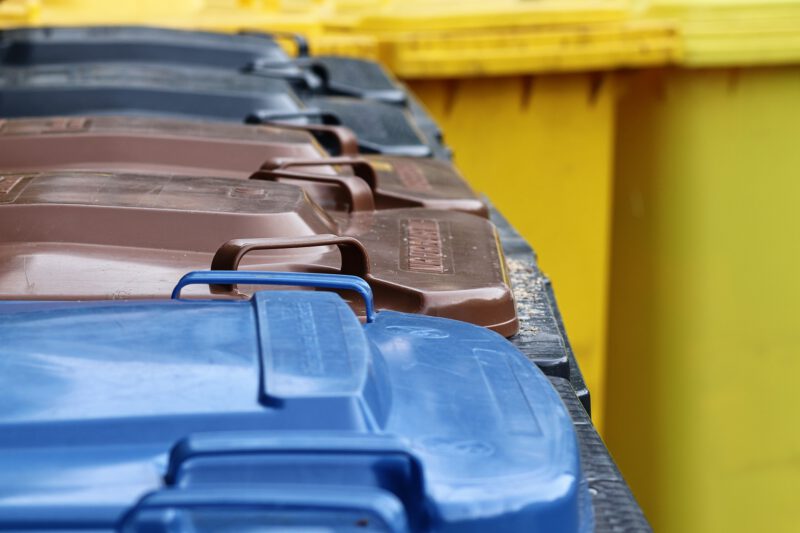Organic waste bin – what can and cannot be put in the brown bin
- Why should we separate waste?
- Proper separation is important
- What belongs in the brown bin?
- What does not belong in the brown bin
Why should we separate waste?
Thanks to growing environmental awareness, more and more people are aware of the importance of waste separation for the environment. Children learn about this from an early age, even in kindergarten. The most important benefits of segregation include:
- Environmental protection – on average, over 300 kg of waste is generated per year per pole. Through proper separation and recycling, we enable the recovery of secondary raw materials from waste suitable for reuse. This reduces the amount of waste ending up in landfills.
- Impacts on soil protection and groundwater – Recycling plastics reduces the amount of plastic that ends up in groundwater because less plastic ends up in landfills. It can take 100 to 1,000 years for plastic to decompose in landfills and enter the soil and water.
- Economic impact – Recycling reduces the consumption of limited raw materials and the release of pollutants into the environment. Recycling makes it possible to manufacture new products using significantly fewer raw materials and energy.
Proper separation is important
For waste separation to be effective, we need to learn how to separate it correctly. While most of us already know how to separate plastic and paper, the biggest problems seem to be deciding what to put in the brown bin, or biodegradable waste. It turns out that waste that shouldn't end up there often ends up there, and many people confuse the brown bin with the one for mixed waste. Organic waste that can be composted belongs in the brown bin.
What belongs in the brown bin?
The brown organic waste bin is the smallest of all bins. Because it's inconspicuous, it's often perceived as less important than a yellow plastic container. The importance of separating plastics is a much-discussed topic. But organic waste is also an important component of municipal waste management. Organic waste, such as:
- Fruit and vegetable peels,
- spoiled vegetables and Fruit ,
- bread ,
- Branches, leaves, mown grass, potted and cut flowers,
- Sawdust, tree bark, untreated wood
- Coffee and tea leaves ,
- leftover foods of plant origin,
- Cereal products,
What does not belong in the brown bin
Not all food is compostable, yet it often ends up in the brown bin, contaminating biodegradable waste and undermining the efforts of those who properly separate their waste. It is strictly forbidden to put the following in the brown bin:
- Flesh and bones
- animal waste,
- Oil,
- coal ash,
- Stones and earth
- drugs,
- impregnated wood, chipboard and MDF,
- Earth, stones,
- Plastic garbage bags.
Waste separation may seem difficult or inconvenient at first glance. It involves multiple trash cans at home, doubts about proper waste disposal, and even the purpose of the entire process. In reality, however, it's not that stressful, and the benefits of proper waste separation have a tremendous impact on the environment and our quality of life. In doing so, we make a real contribution to improving air, water, and soil quality.
THE PUBLISHER'S CHOICE
Almonds 1 kg BIOGO
- €11,69
€13,75- €11,69
- Unit price
- / per
Walnuts 800 g BIOGO
- €8,65
€10,18- €8,65
- Unit price
- / per
Dried organic mango 400 g BIOGO
- €10,99
- €10,99
- Unit price
- / per
Dried White Mulberries 500 g ORGANIC
- €5,84
€6,87- €5,84
- Unit price
- / per
Dried organic figs 800 g BIOGO
- €30,12
- €30,12
- Unit price
- / per
Unpeeled buckwheat groats 1 kg BIOGO
- €2,81
€3,31- €2,81
- Unit price
- / per
Organic coconut flakes 500 g BIOGO
- €10,07
- €10,07
- Unit price
- / per
Organic oat flakes 600 g BIOGO
- €3,77
- €3,77
- Unit price
- / per
Organic cashew nuts 1 kg BIOGO
- €19,99
- €19,99
- Unit price
- / per
Milk thistle seeds 1 kg BIOGO
- €3,99
- €3,99
- Unit price
- / per









































































































































